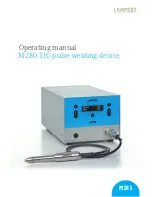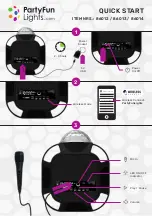
Page 39
arc is extinguished by pressing
the torch trigger twice within
300ms.
7.2.5 Set welding parameters
The DC TIG welding parameters are as shown in Figure 7-5.
Figure 7-5 Current waveform of DC TIG
t0-Pre-flow time
I1-Initial current
t1-Initial current period
I2-Current during up-slope time
t2-Up-slope time
I3-Peak current
t3-Peak current period
I4-Current during down-slope time
t4-Down-slope time
I5-Finish current t5-Finish current period
t6-Post-flow time
● Initial current (I1): The initial current is the current after the torch trigger is pressed to start
the arc, which should be determined according to the process requirements. A large initial
current makes it easy to start the arc, but it should not be too large when welding thin plates,
otherwise, it may burn through the workpiece. After the arc is started in 4T operation, the
current remains at the initial current to achieve the purpose of preheating the workpiece or
lighting.
● Up-slope time (t2): Refers to the time as the current slowly rises from the initial current to
the peak current, which can be determined according to the usage and process
requirements.
● Peak current (I3): Set by the user according to the actual process requirements.
● Down-slope time (t4): Down-slope time refers to the as when the current drops from the
peak to the finish current, which can be determined according to the usage and process
requirements.
● Finish current (I5): In 4T operation mode, the arc is not extinguished after the current
down-slope and remains in a state of continuous arcing, which can avoid weld defects or
large craters caused by immediately cutting off the output. The operating current in this state
Summary of Contents for TIG200
Page 53: ...Page 53 Appendix 3 List of common spare parts...
Page 56: ...Page 56...
Page 59: ...Page 59...
















































